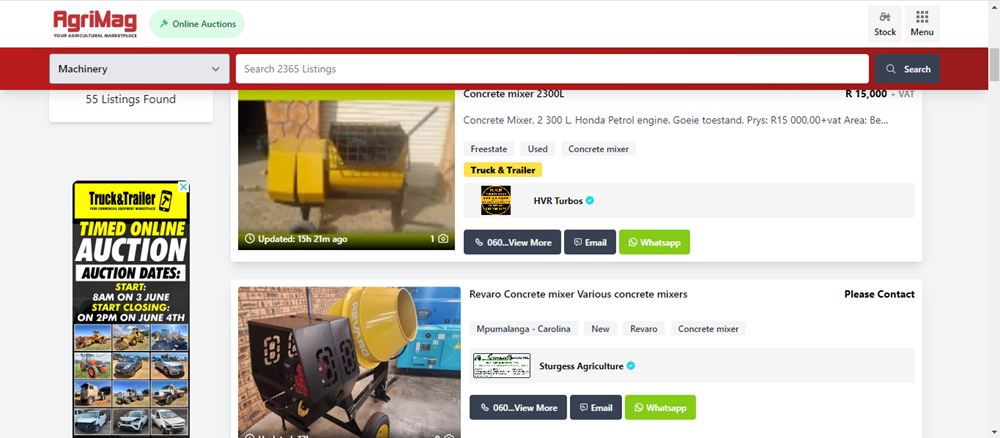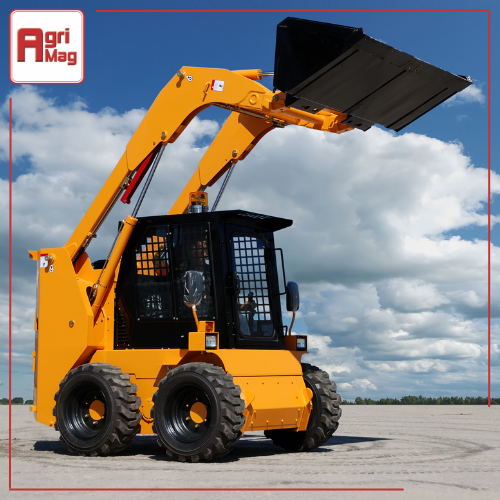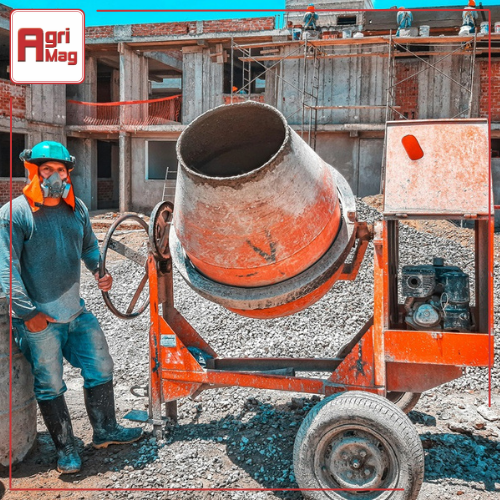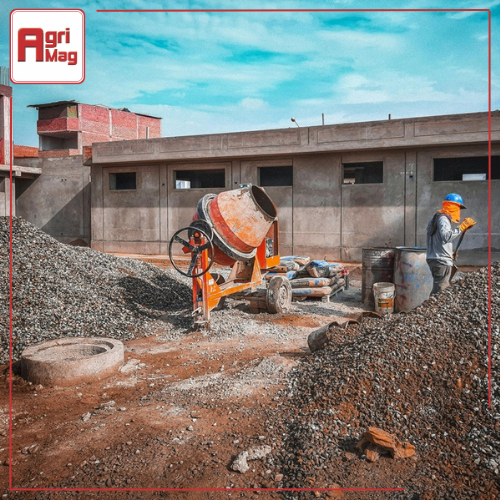
Understanding the Essential Components of a Concrete Mixer
Date: 28/04/2023
Concrete mixers are vital equipment in the construction industry, especially in South Africa where rapid urbanisation demands robust and reliable building solutions. Understanding the components of a concrete mixer is essential for construction professionals and enthusiasts alike. This article delves into the five main components of a concrete mixer: the mixing drum, motor, chassis, discharge mechanism, and water tank, explaining their functions and importance in the concrete mixing process. Looking to buy machinery for sale at affordable prices for your project? Find equipment on AgriMag to start with your project.

Key components of a concrete mixer
Mixing Drum
The mixing drum is the heart of the concrete mixer. It is where the concrete ingredients—cement, sand, gravel, and water—are combined and mixed. The drum is designed to rotate at a specific speed to ensure a uniform and consistent mix.
Key Features of the Mixing Drum:
- Shape and Design: The drum is usually shaped like a cone or a cylinder. This design helps to keep the ingredients in constant motion, ensuring thorough mixing.
- Rotation: The drum rotates on an axis, driven by the motor. The speed of rotation is crucial; too fast, and the mix will be uneven, too slow, and the ingredients won't mix properly.
- Capacity: The size of the drum dictates the volume of concrete it can produce. For large construction projects, drums with higher capacity are preferred.
Motor
The motor is the powerhouse of the mixer. It provides the necessary energy to rotate the mixing drum and perform the mixing operation.
Types of Motors:
- Electric Motors: Common in smaller mixers and indoor applications due to their clean operation and ease of use.
- Diesel or Petrol Engines: Preferred for larger mixers and outdoor use because of their robust power output and independence from electricity.
Motor Features:
- Power Output: The strength of the motor determines the speed and efficiency of the mixing process.
- Durability: Motors need to be robust and reliable to withstand the harsh conditions of construction sites.

Chassis
The chassis is the framework that supports the entire concrete mixer. It is designed to be sturdy and durable, capable of handling the weight and motion of the mixer components.
Chassis Characteristics:
- Material: Typically made from heavy-duty steel to provide strength and stability.
- Mobility: Some chassis are equipped with wheels or tracks to make the mixer mobile, which is essential for transporting it around construction sites.
- Stability: A good chassis ensures that the mixer remains stable during operation, preventing accidents and ensuring a consistent mix.
Discharge Mechanism
The discharge mechanism is responsible for the efficient unloading of the mixed concrete. It ensures that the concrete is delivered where it is needed without wastage or contamination.
Types of Discharge Mechanisms:
- Manual: Simple lever-operated systems that tilt the drum or open a discharge chute.
- Automated: Motorised systems that provide precise control over the discharge process, often controlled via a panel or remote.
Importance of Discharge Mechanism:
- Efficiency: A good discharge mechanism minimises the time taken to unload the concrete, enhancing overall productivity.
- Control: It allows for precise placement of the concrete, which is crucial for maintaining the quality of the construction work.
Water Tank
The water tank is an integral part of a concrete mixer, providing the necessary water for the concrete mix. Proper water addition is critical for achieving the desired concrete consistency and strength.
Features of the Water Tank:
- Capacity: The size of the water tank should match the capacity of the mixer to ensure a balanced mix.
- Control: Valves and gauges are used to control the flow and measure the amount of water added to the mix.
- Material: Usually made from corrosion-resistant materials to ensure durability and longevity.
Role of the Water Tank:
- Consistency: Proper water measurement is essential for achieving the correct concrete mix consistency.
- Quality: Ensuring the right water-cement ratio is critical for the structural integrity of the concrete.
Understanding the components of a concrete mixer is fundamental for anyone involved in the construction industry. Each component, from the mixing drum and motor to the chassis, discharge mechanism, and water tank, plays a crucial role in ensuring efficient and high-quality concrete production. By appreciating how these components work together, construction professionals can make informed decisions about the equipment they use, ultimately contributing to better building practices and more durable structures. Are you looking to purchase machinery for your project? To get your project started, find equipment on AgrMag.
Categories:
Common category
Category Search:
Latest articles:

What to Look for When Buying a Skidsteer Loader for Farming

Why Planning Early for the Planting Season Pays Off

Why Winter Feed Management is Crucial for Livestock Health


